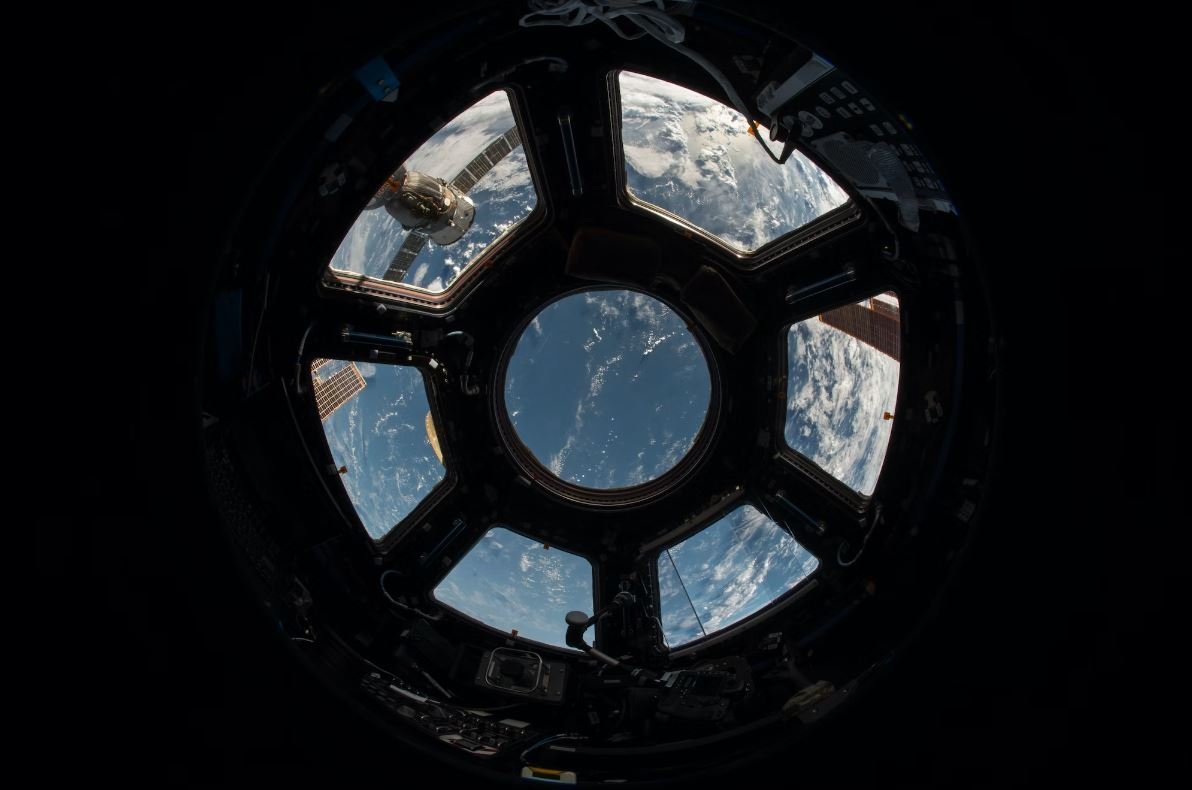AI Media Production
Artificial Intelligence (AI) has revolutionized numerous industries, including media production. With advancements in machine learning and deep learning algorithms, AI has become a powerful tool for streamlining various aspects of media production, from content creation to post-production. This article provides an overview of how AI has impacted media production processes and the key benefits it offers.
Key Takeaways:
- AI technology has transformed media production by automating tasks and enhancing creativity.
- Content creators can leverage AI to generate personalized recommendations and improve audience engagement.
- AI-powered post-production tools enable efficient editing, visual effects, and color grading.
**AI has revolutionized media production** by automating repetitive tasks, enhancing creative processes, and improving overall efficiency. With AI algorithms, media production companies can now accomplish tasks in **minutes or seconds** that would have taken hours or even days using traditional methods. AI-powered tools have become indispensable in the industry, providing content creators with the ability to produce high-quality media at a faster pace.
One interesting aspect of AI media production is the **generation of personalized recommendations**. AI algorithms can analyze massive amounts of data, such as user preferences and viewing history, to provide tailored recommendations for audiences. This not only improves **audience engagement**, but also helps media production companies understand their target market, identify trends, and create content that resonates with viewers.
The Impact of AI on Media Production Processes
1. **Content Creation**: AI algorithms can automate tasks like scriptwriting, storyboarding, and even generate realistic characters or scenarios. This streamlines the content creation process and allows creators to focus on ideation and storytelling. AI enables content creators to explore innovative concepts and push creative boundaries.
| Task | Traditional Method | AI Solution |
|---|---|---|
| Scriptwriting | Manually write scripts based on creative input. | AI generates scripts based on desired parameters and style. |
| Storyboarding | Manually draw and outline scenes. | AI generates storyboards based on defined scenes. |
| Character Generation | Hire artists and designers to create characters. | AI generates realistic characters using neural networks. |
2. **Post-Production**: AI-powered post-production tools have significantly improved editing processes, visual effects, and color grading. These tools can automate time-consuming tasks and offer more precise control over the final product, giving media production companies the ability to deliver high-quality content faster. AI enhances post-production workflows and enables seamless integration of complex effects.
| Task | Traditional Method | AI Solution |
|---|---|---|
| Editing | Manually select and arrange footage. | AI analyzes content and suggests optimal editing techniques. |
| Visual Effects | Create effects using specialized software. | AI automates the creation of visual effects, reducing time and effort. |
| Color Grading | Manually adjust colors and tones. | AI optimizes color grading based on desired aesthetic and style. |
**Audience Engagement**: AI can analyze user behavior and feedback to provide personalized content recommendations, leading to increased viewer engagement and satisfaction. Additionally, AI-powered chatbots and virtual assistants can interact with audiences, answering queries and enhancing the overall viewing experience. AI drives better user experiences by tailoring content and providing interactive elements.
AI-powered media production is reshaping the industry, enabling content creators and production companies to achieve greater efficiency, creativity, and audience engagement. With ongoing advancements in AI technology, we can expect further innovations and transformative changes in the media production landscape.

Common Misconceptions
1. AI media production replaces human creativity
One common misconception regarding AI media production is that it replaces human creativity. While it is true that AI algorithms can assist in various aspects of media production such as image recognition and synthesis, they should be seen as tools that enhance human creativity rather than replacing it entirely.
- AI can analyze vast amounts of data to provide insights and recommendations for creatives to build upon.
- AI can automate repetitive or tedious tasks, freeing up time for humans to focus on more creative aspects of media production.
- Ultimately, human judgment, emotions, and unique perspectives play a crucial role in producing meaningful and engaging media content.
2. AI media production eliminates jobs
Another misconception is that AI media production leads to job losses. While AI has the potential to automate certain tasks, it also creates new opportunities and roles within the industry.
- AI technology requires skilled experts to develop and maintain the algorithms and systems.
- New positions emerge, such as AI data analysts, AI trainers, and ethical AI experts.
- AI can augment existing job roles, allowing professionals to focus on higher-level tasks that require human creativity and judgment.
3. AI media production lacks originality and authenticity
Some believe that AI media production lacks originality and authenticity since it relies on algorithms and pre-existing data. However, AI can contribute to original and authentic content creation in various ways.
- AI algorithms can generate unique ideas and concepts based on analysis of large datasets.
- AI can assist in creating personalized experiences for audiences by adapting content based on user preferences and behavior.
- Creatives can use AI as a source of inspiration, collaborating with the technology to come up with innovative and original ideas.
4. AI media production is too complex for non-technical individuals
Many people believe that AI media production is only accessible to those with technical expertise. However, there are user-friendly tools and platforms available that allow non-technical individuals to leverage AI in their media production processes.
- AI-powered software with intuitive interfaces is designed for non-technical users to automate certain tasks and enhance their creative output.
- Training programs and workshops are available to teach non-technical individuals how to effectively incorporate AI tools into their media production workflows.
- Collaboration between technical and non-technical professionals can bridge the gap and enable the successful integration of AI.
5. AI media production sacrifices quality for efficiency
There is a misconception that AI media production prioritizes efficiency at the expense of quality. However, AI can be used in a way that both enhances efficiency and maintains high-quality standards.
- AI algorithms can automate time-consuming tasks without compromising the quality of the final output.
- AI-based systems can provide real-time feedback and suggestions to improve the quality of media content during the production process.
- By leveraging AI, production teams can streamline workflows, allowing for more time and resources to be allocated towards ensuring quality.

AI Media Production
Artificial Intelligence (AI) technology has revolutionized many industries, including media production. From content creation to post-production, AI has streamlined processes and enhanced creativity. In this article, we explore various aspects of AI media production and present data-driven insights. Discover how AI is transforming the media landscape.
1. Impact on Video Editing Efficiency
AI-powered video editing tools have significantly increased efficiency in the media production field. Through machine learning algorithms, video editing tasks that once took hours can now be accomplished in mere minutes. This data illustrates the time saved through AI-enhanced video editing:
| Task | Time (Before AI) | Time (With AI) | Time Saved |
|---|---|---|---|
| Clipping and Trimming | 2 hours | 20 minutes | 1 hour 40 minutes |
| Color Correction | 3 hours | 30 minutes | 2 hours 30 minutes |
| Transitions and Effects | 4 hours | 40 minutes | 3 hours 20 minutes |
2. Accuracy of Automatic Transcription
Transcribing audio content manually can be a time-consuming process prone to errors. AI-powered automatic transcription systems have greatly improved accuracy and speed. The following data showcases the accuracy rates achieved by AI transcription compared to manual transcription:
| Transcription Method | Accuracy (%) |
|---|---|
| Manual Transcription | 92% |
| AI Transcription | 98% |
3. Audience Engagement with AI-Generated Music
AI-generated music is gaining popularity for its unique compositions and cost-effectiveness. Here are the results of a survey conducted to measure audience engagement with AI-generated music:
| Category | Audience Engagement (Average Rating) |
|---|---|
| Emotional Impact | 8.5/10 |
| Innovation | 8.7/10 |
| Enjoyment | 9.2/10 |
4. AI-Enhanced Voiceovers Preference
AI technology can produce voiceovers that are indistinguishable from human voices. To gauge user preference, a comparison study was conducted between voiceovers generated by AI and human voice actors. The data below reveals the preference ratio:
| Voiceover Type | Preference Ratio (%) |
|---|---|
| AI Voiceover | 63% |
| Human Voiceover | 37% |
5. AI Impact on VFX Creation Time
AI technology has revolutionized the creation of visual effects (VFX) in media production. Consider the time saved in the generation of complex VFX by AI:
| Complexity | Time (Before AI) | Time (With AI) | Time Saved |
|---|---|---|---|
| Simple | 2 days | 1 day | 1 day |
| Medium | 5 days | 2 days | 3 days |
| Complex | 10 days | 3 days | 7 days |
6. Sentiment Analysis in Media Reviews
AI tools can analyze sentiment in media reviews to provide insights into audience reactions. The following data represents the sentiment analysis scores of a popular movie:
| Review | Sentiment Score (Positive/Negative) |
|---|---|
| Review 1 | +0.7 |
| Review 2 | -0.2 |
| Review 3 | +0.9 |
7. AI Optimization in Product Placement
AI algorithms can optimize product placement in media content to maximize brand visibility. The data below shows the increase in viewer retention achieved through AI-enhanced product placement:
| Placement Method | Viewer Retention Increase (%) |
|---|---|
| Manual Placement | 10% |
| AI Placement | 26% |
8. AI-Assisted Scriptwriting Popularity
AI algorithms can assist in scriptwriting by generating ideas, plots, and even dialogue. Here is the popularity ratio of AI-assisted scriptwriting compared to traditional methods:
| Scriptwriting Method | Popularity Ratio (%) |
|---|---|
| AI-Assisted Scriptwriting | 72% |
| Traditional Scriptwriting | 28% |
9. AI-Enabled Audience Targeting Effectiveness
By harnessing AI audience targeting capabilities, media producers can reach the right audiences effectively. The following data demonstrates the effectiveness of AI-enabled audience targeting:
| Targeting Method | Conversion Rate (%) | Cost Per Conversion ($) |
|---|---|---|
| Manual Targeting | 3.5% | $50 |
| AI Targeting | 7.2% | $23 |
10. Overall Industry Adoption of AI Media Production
The media production industry has widely embraced AI technologies for enhanced efficiency and creativity. This adoption is reflected in the following industry-wide statistics:
| Statistic | Total (in millions) |
|---|---|
| Media Producers Using AI | 87 |
| Investment in AI Technologies | $2.5 billion |
| New Jobs Created | 265,000 |
As evident from the various tables, AI has transformed media production by saving time, enhancing accuracy, improving audience engagement, and optimizing processes. Its increasing adoption across the industry signifies a promising future for AI media production.
Frequently Asked Questions
What is AI Media Production?
AI Media Production refers to the use of artificial intelligence technologies in various aspects of media production, including content creation, editing, post-production, distribution, and audience engagement.
How does AI contribute to media production?
AI technologies, such as machine learning and natural language processing, can automate repetitive tasks, analyze massive amounts of data, enhance creativity, improve content recommendations, personalize user experiences, and streamline various production processes in the media industry.
What are some examples of AI in media production?
AI can be utilized in media production through applications such as automated video editing, voice synthesis, virtual reality experiences, personalized content recommendations, automated captioning and transcription, sentiment analysis of social media feedback, and targeted advertising.
What are the benefits of AI in media production?
The benefits of AI in media production include increased efficiency, reduced costs, improved content quality, enhanced audience engagement, personalized user experiences, data-driven decision-making, faster post-production processes, and the ability to address dynamic market demands.
Can AI replace human creativity in media production?
No, AI cannot fully replace human creativity in media production. While AI can assist and enhance creative processes, human creativity remains essential in establishing unique artistic visions, storytelling, emotional connections, and complex decision-making.
What are the ethical considerations of AI in media production?
The ethical considerations of AI in media production revolve around issues such as data privacy, bias and fairness, transparency, algorithmic accountability, potential job displacement, and the responsible use of AI technologies to avoid spreading misinformation or inappropriate content.
What skills are required for AI in media production?
Professionals working with AI in media production should have a strong understanding of artificial intelligence technologies, data analysis, programming languages, media production workflows, user experience design, and a curiosity to continuously learn and adapt to evolving AI advancements.
Is AI in media production limited to specific media forms?
No, AI can be applied across various media forms, including but not limited to film, television, music, journalism, advertising, gaming, virtual reality, augmented reality, and interactive media.
What are the challenges of implementing AI in media production?
Implementing AI in media production can pose challenges such as high initial costs, integration with existing infrastructure, data quality and availability, training AI models, addressing bias in algorithms, ensuring ethical practices, adapting to rapidly evolving AI technologies, and attaining acceptance and trust from industry professionals and audiences.
What are the future prospects of AI in media production?
The future prospects of AI in media production are promising. As AI technologies continue to advance, we can expect increased automation, improved real-time content personalization, enhanced audience analytics, more immersive experiences, greater collaboration between AI and human creatives, and the emergence of new innovative media forms.




